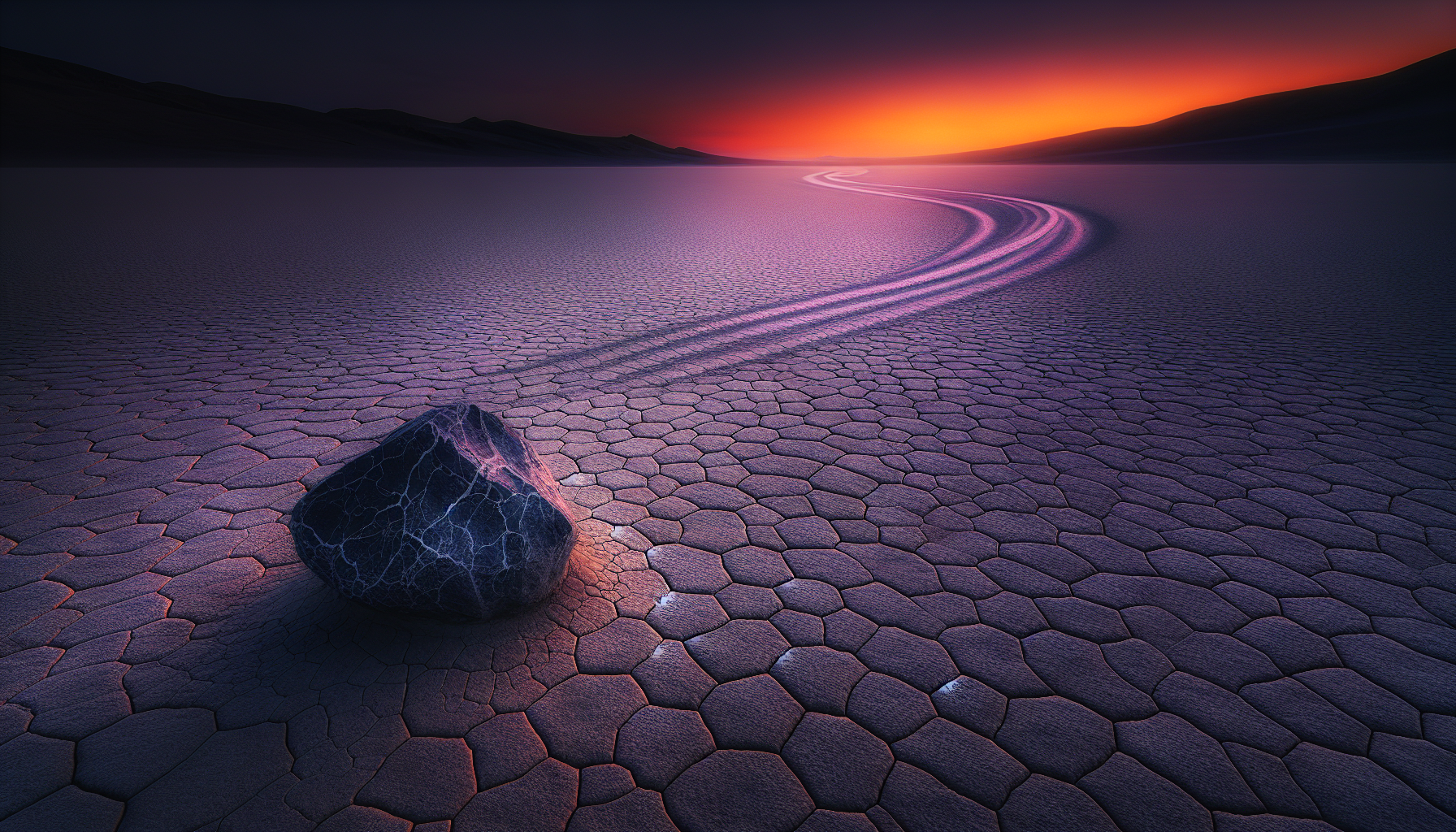
For decades, the mystery of these moving rocks baffled scientists and captivated visitors. How could such heavyweight objects shift across the desert floor in one of the harshest environments on Earth? Early theories ranged from the plausible to the fantastical—fierce winds mixed with wet ground, magnetism, or even the involvement of extraterrestrial forces. Racetrack Playa itself, a cracked, pancake-flat expanse of dried mud, seemed like the perfect stage for such an enigma, its isolation adding to the allure.
One particularly perplexing detail has always stood out: the stones typically move when no one is watching. The tracks often appear as though overnight, reinforcing a sense of eerie unpredictability. Attempts to observe the rocks in action proved futile for decades, as though nature was in on the trick, refusing to reveal her hand. Yet, this is no desert illusion—these are genuine geological wonders, and their movement is as real as the scorching air that hangs over the valley during summer.
The role of weather and terrain in rock movement
In the case of Death Valley’s elusive moving rocks, the secret lies in a perfectly orchestrated interplay of weather and terrain. Racetrack Playa, the dry and cracked expanse where these stones perform their slow-motion migration, provides an ideal, albeit rare, environment for such a phenomenon to occur. The surface of the playa, composed of fine silt and clay, is as smooth and firm as polished tile until it’s transformed by the brief rains that occasionally sweep through this otherwise arid landscape. When water pools across the expanse, the lakebed turns to a slick, low-friction surface—essentially a temporary skating rink for the stones.
But water alone isn’t the full story. The region’s extreme climate engineering is at work here. On winter nights, the temperature in Death Valley can plummet far below freezing. After rainfall, this means that a thin layer of standing water on the playa can solidify into fragile sheets of ice. These sheets don’t simply freeze solid in place; during the clear, sunny mornings that follow, the ice begins to melt and crack. Large floes of ice become mobile, nudged along by even the gentlest of breezes. These icy panels act as nature’s slow but persistent bulldozers, pushing the rocks across the muddy surface beneath them. The wet mud then dries under the relentless desert sun, preserving the sinuous tracks as evidence of the stones’ journeys.
The playa’s flatness is another crucial factor. There’s little in the way of elevation change, allowing the stones to travel horizontally without gravity complicating the action. It’s one of the reasons why this strange phenomenon can only be observed under specific conditions; the ground must remain uniformly level, and the ice sheets need room to roam freely. Any deviation in the playa’s terrain could disrupt the delicate setup, rendering the stones immobile until nature’s perfect storm re-emerges to set them gliding once more.
Interestingly, the combination of necessary elements for sailing stones underscores just how rare this interaction is, even in a place like Death Valley. Among the strange phenomena to call this region home, the moving rocks rely not on wild extremes but on the subtle synergy of water, ice, wind, and an unyielding flat surface. It’s a dance choreographed by nature itself, one delicate enough to evade detection for decades, until researchers finally cracked its code with a blend of technology, patience, and serendipity.

